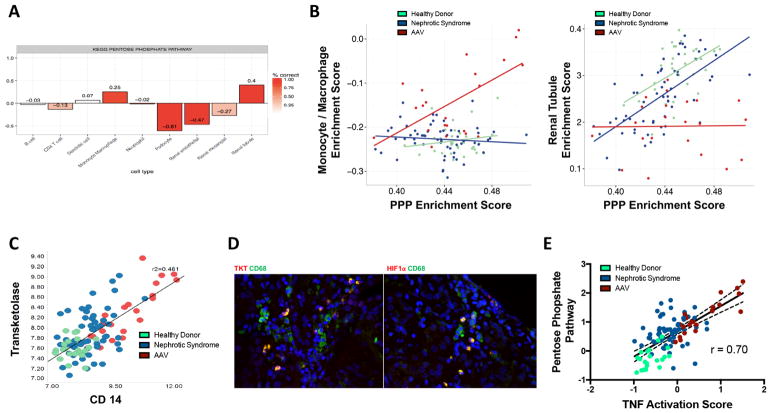Figure 4.
Myeloid cells are likely a major source of activated pentose phosphate pathway (PPP) gene expression. Subset prediction from enrichment correlation (SPEC) predicts that renal tubule and monocyte/macrophages are the likely source of PPP in the discovery cohort with the intensity of the red bar indicates degree of confidence in the bar plot correlation of cell types and PPP expression (A). The monocyte/macrophage enrichment score correlates with the PPP enrichment score in antineutrophil cytoplasmic antibody-associated vasculitis (AAV), while the tubule enrichment score correlates with the PPP enrichment score in healthy living donor and nephrotic syndrome samples (B). Transketolase (TKT), a key regulatory enzyme within the PPP, correlates with CD14, a marker for monocyte/macrophages in the glomerular compartment in the discovery cohort (C). Tissue immunofluorescence demonstrates localisation of TKT and HIF-1α within monocytes/macrophages (CD14) in the glomerular compartment (D). The PPP gene expression score is strongly associated with increased expression of a tumour necrosis factor (TNF) activation score within the glomerular compartment (E).

